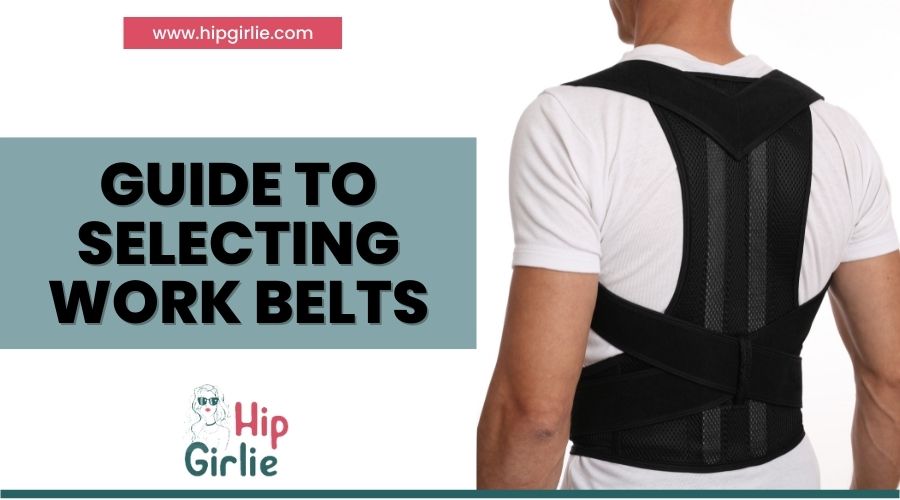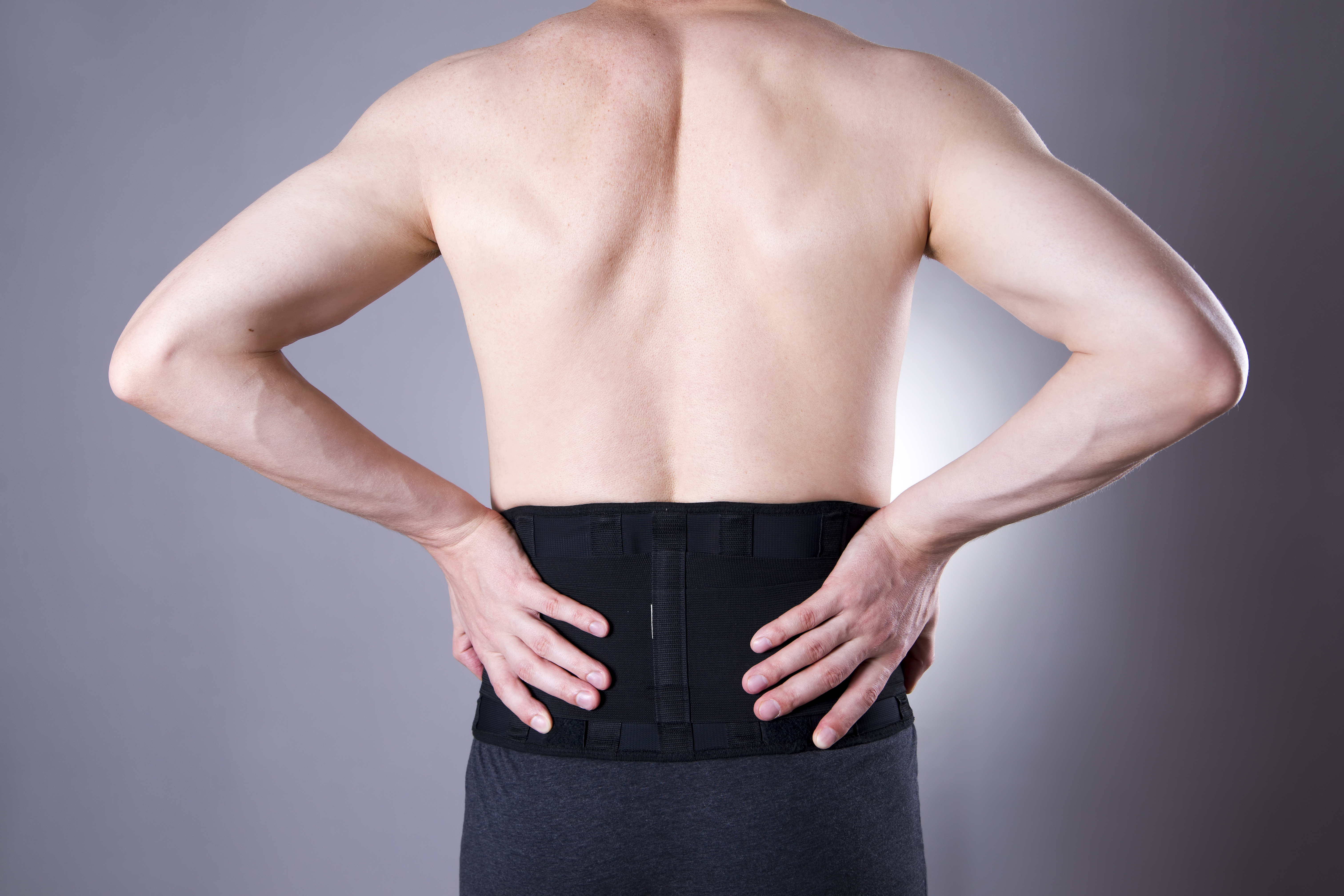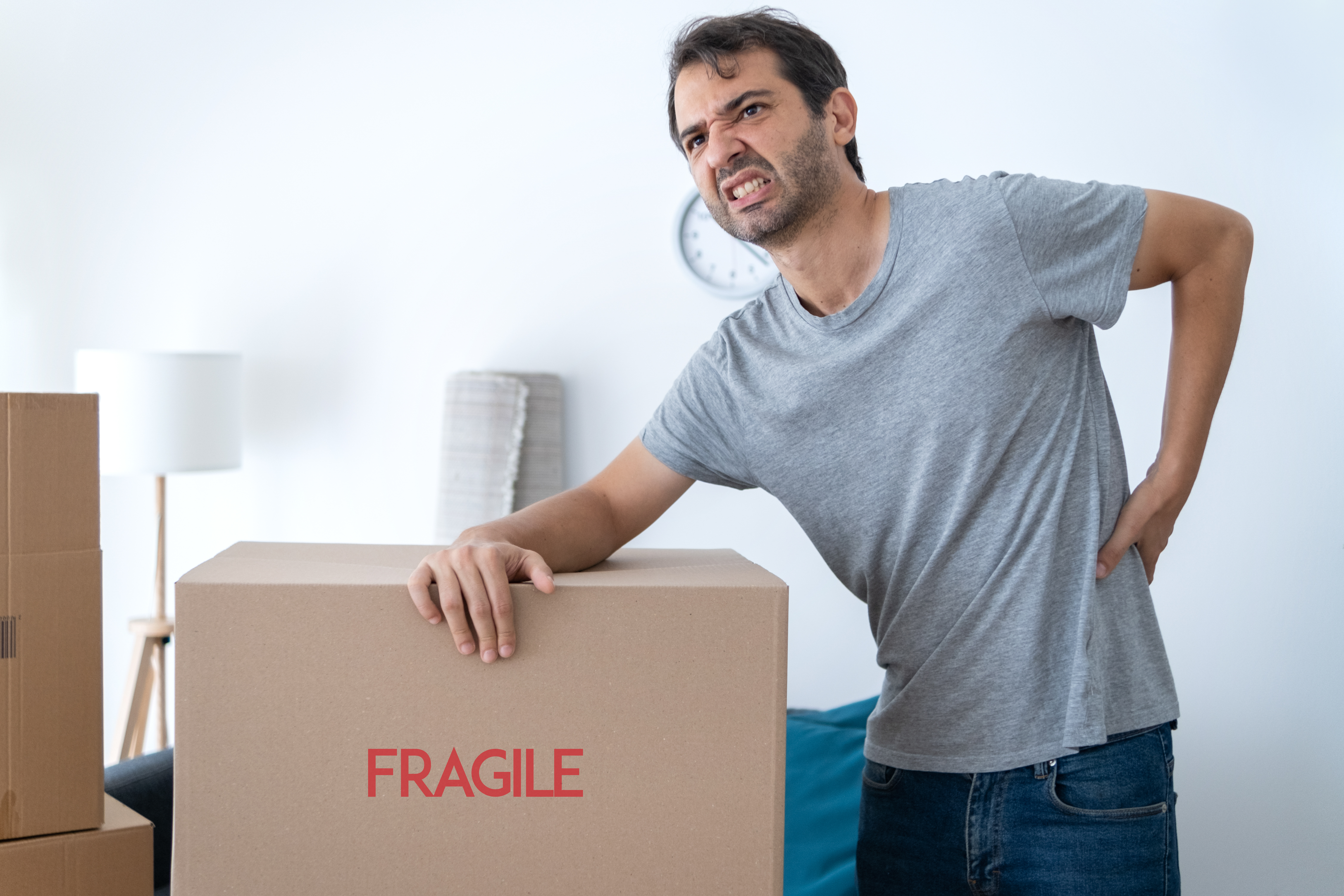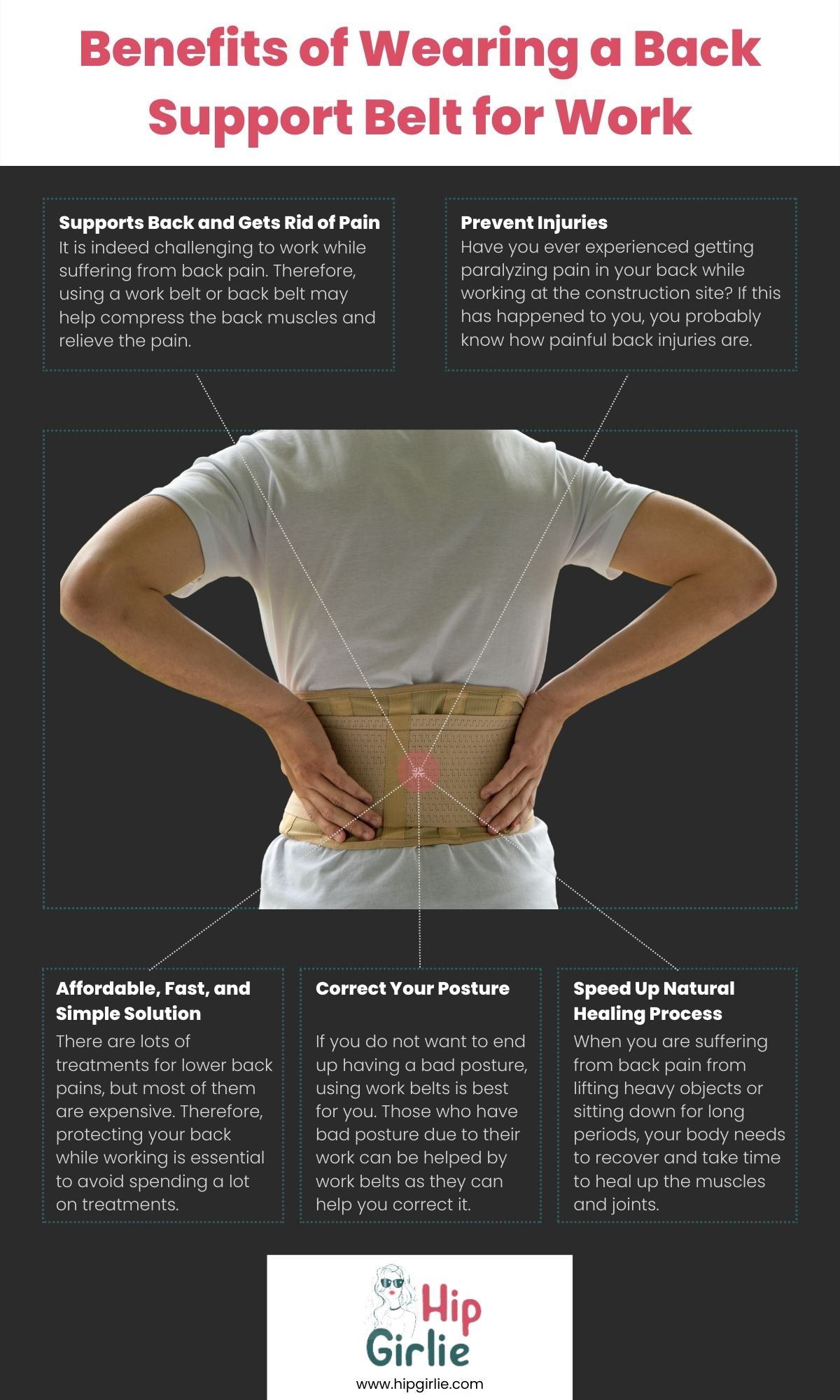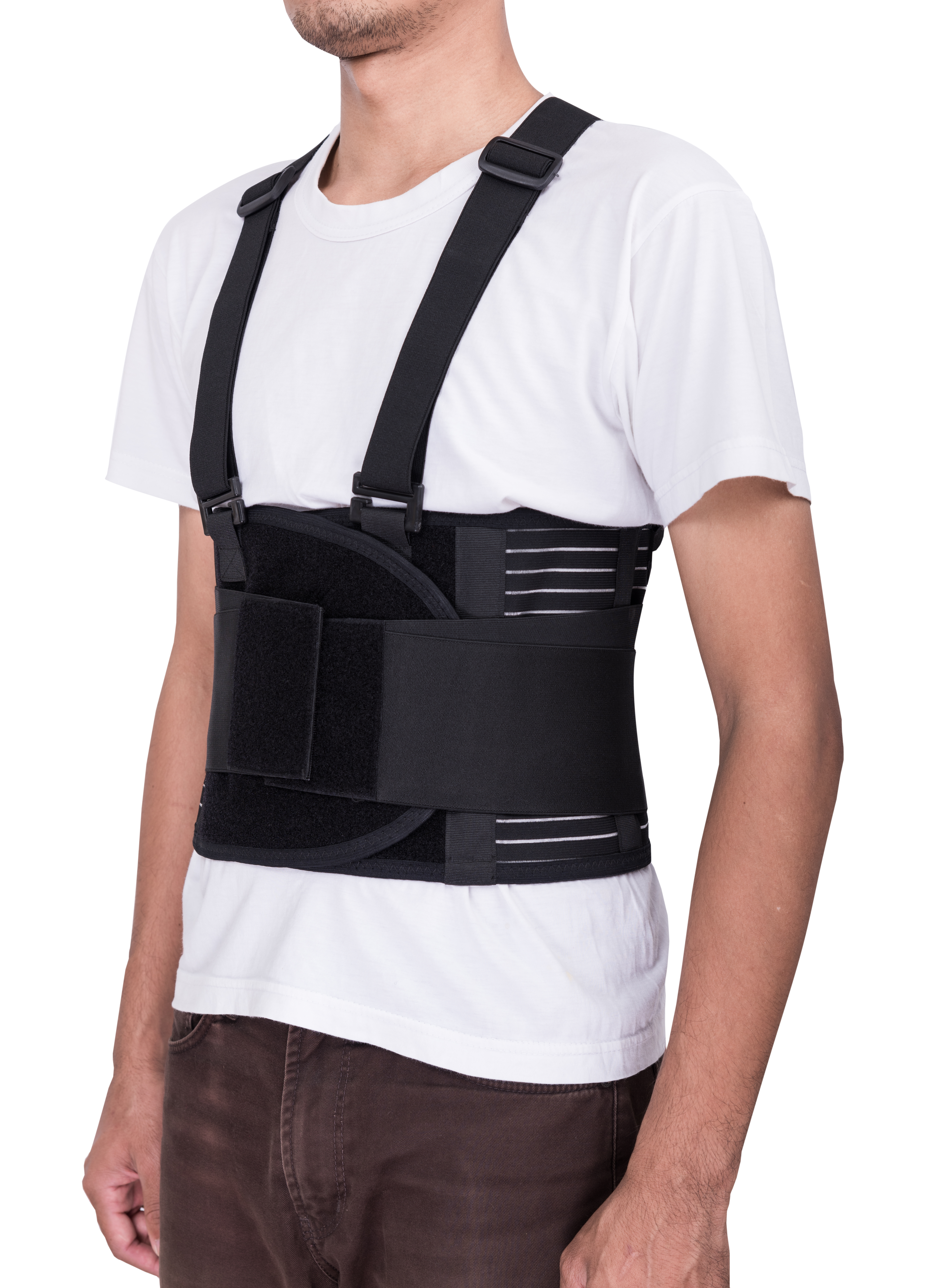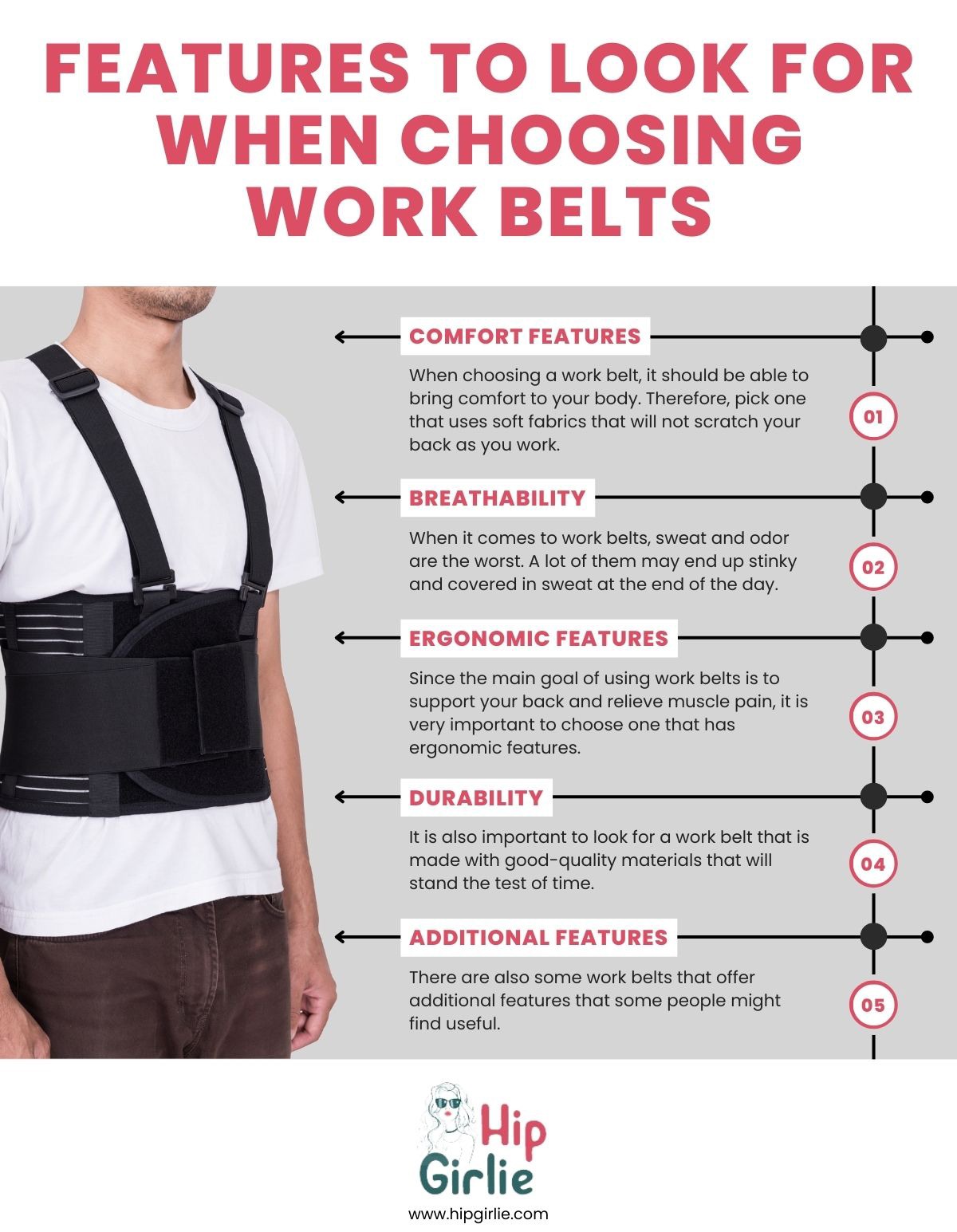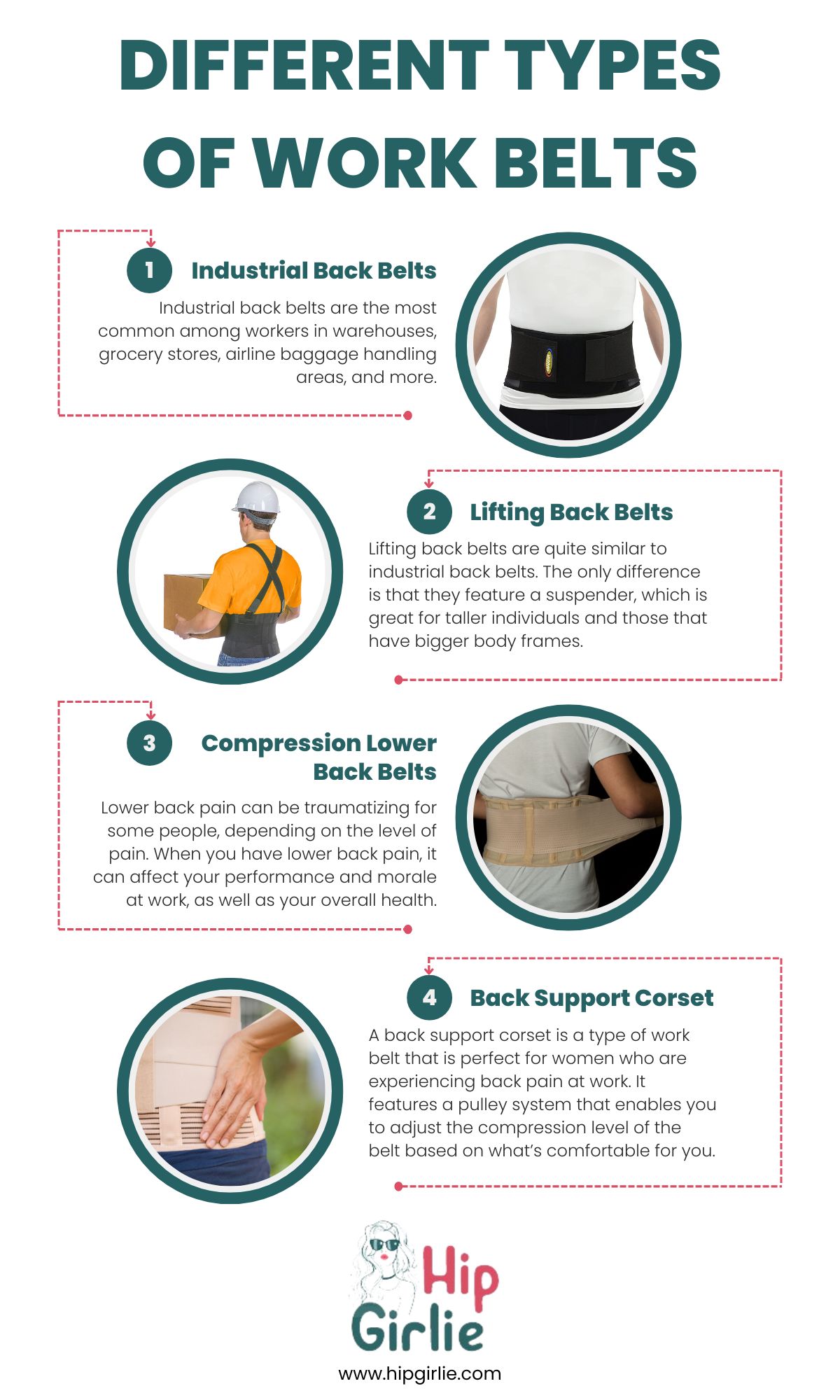A lot of people experience back pain, especially those whose jobs involve mechanical tasks like lifting and moving heavy objects or those who sit for a long period. For example, if your job is at the construction site or in a warehouse, lifting heavy objects may lead to back pain. People who work at the office, on the other hand, also experience back pain due to sitting in front of the computer the whole day. Both of these types of work may also cause a strain on the lower back and affect posture.
If lifting heavy objects or sitting for long periods is unavoidable in the type of work that you do, you need to find other solutions in order to alleviate and prevent the back pain that you experience. Fortunately, there are different ways to prevent back pain from work, and one of those is by wearing work belts that support the back. These are also referred to as back belts and lumbar belts. They are lightweight belts that provide support to the lumbar and are usually worn around the lower back.
If you are suffering from back pain due to the tasks that you do at work like, lifting and moving heavy objects, a work belt might help you. To help you choose, we are giving you a guide to selecting work belts.
What are Work Belts?
Work belts or back braces for work are among the most in-demand items. It’s because, based on the Center for Disease Control and Prevention, back injuries account for around 20% of all injuries on the job, which costs the country about $20 to $50 billion each year. But wearing a work belt that is made for lifting can help lessen the strain of workers on their back, ease existing pain, and prevent damage to the structures of the lumbar spine.[1]
Many people, both men and women, suffer from lower back pain because of different things, such as jobs that require heavy lifting, as well as injuries like sprained or pulled muscles and other conditions such as herniated disc, degenerative disc disease, spondylolisthesis, and sciatica. Therefore, if you have a job that requires lifting heavy objects often, like those of construction works, warehouse workers, and movers, using a work belt may help reduce the pain that you might be experiencing after working.
Jobs that require lifting heavy items can cause wear and tear on the spine, particularly in the lower back area. Later on, the wear and tear can leave people more prone to other conditions and injuries, which may eventually need surgery. With this, having the correct form at work is very important for overall health.[1]
Benefits of Wearing a Back Support Belt for Work
Using a lower back belt to lessen lumbar pain is not a new concept. In fact, they are used during medical rehab. But back belts used as supports in the workforce and weightlifting have gained popularity both for the added support they give when lifting and for their ability to address back pain at the same time. Wearing a work belt while working can help reduce stress on the spine, increase intra-abdominal pressure to counteract forces on the spine, and help reduce loads when lifting by stiffening the spine.[1]
In addition to providing lower back support, work belts can also guide workers in keeping a proper lifting technique while maintaining their posture. It can also keep them protected from back injuries by decreasing the strain. That’s not all, as back support belts can also help workers work well even when they have back pains. It can keep their back muscles warm while working.
Below are some of the advantages that workers can get from using work belts:
Supports Back and Gets Rid of Pain
It is indeed challenging to work while suffering from back pain. Therefore, using a work belt or back belt may help compress the back muscles and relieve the pain. It can help you do your work pain-free.
Prevent Injuries
Have you ever experienced getting paralyzing pain in your back while working at the construction site? If this has happened to you, you probably know how painful back injuries are. The good thing about wearing work belts is that they can stabilize your back and prevent any damage from occurring, which can be essential for jobs that require lifting heavy objects.[2]
Affordable, Fast, and Simple Solution
There are lots of treatments for lower back pains, but most of them are expensive. Therefore, protecting your back while working is essential to avoid spending a lot on treatments. Work belts are affordable and easy to use, and they can provide you with some support as you lift heavy objects at work.[2]
Correct Your Posture
If you do not want to end up having a bad posture, using work belts is best for you. Those who have bad posture due to their work can be helped by work belts as they can help you correct it. It is very important to have your posture corrected as bad posture also causes back pain and sometimes back injury.[2]
Speed Up Natural Healing Process
When you are suffering from back pain from lifting heavy objects or sitting down for long periods, your body needs to recover and take time to heal up the muscles and joints. However, since you have work, it is challenging to give your body time to recover. But by wearing work belts, you’ll still be able to do your tasks at work as it speeds up the natural healing process of your joints and muscles.[2]
However, note that work belts or back support belts also have a few disadvantages like other things. One of those is having weak muscles. It’s because when a person becomes too dependent on the belt, his core and abdominal muscles might weaken. Therefore, you also need to remember that these belts are only used as support for your back and not as total protection. It should not inflate your self-confidence and sense of security when lifting.[1]
While using a work belt may help treat and prevent lower back pain, you can still sustain an injury while wearing it, especially if you lift heavy objects more than you should. Lastly, you should not wear a work belt around the clock as it can cause the muscles in your back to lose strength and flexibility, which might leave you more prone to injuries.
Features to Look For When Choosing Work Belts
When you go to stores or search online, you will find different options when it comes to work belts or back belts. But before you choose, there are a few features that you might want to look for in order to find the best one that will cater to your needs. Below are some of the must-have features for work belts or back support belts:
Comfort Features
When choosing a work belt, it should be able to bring comfort to your body. Therefore, pick one that uses soft fabrics that will not scratch your back as you work. Having soft materials on the exterior of the belt is important to avoid chafing and prevent coming home from work with a sore and inflamed back. It is also recommended to find work belts that feature a cushioned lumbar pad, as it supports your back and muscle.[2]
Breathability
When it comes to work belts, sweat and odor are the worst. A lot of them may end up stinky and covered in sweat at the end of the day. Therefore, it is essential to find a work belt that features a breathable mesh lining. This helps in letting the airflow in the belt and keeps your back fresh and odor-free even after using it.[2]
Ergonomic Features
Since the main goal of using work belts is to support your back and relieve muscle pain, it is very important to choose one that has ergonomic features. Pick a work belt that has enough compression to relieve any pain and back issues you might be experiencing. Also, select a belt that is stiff enough to provide support but will still stay ergonomic and comfortable. It sucks when the belt losses its ergonomic qualities as time passes.[2]
Durability
It is also important to look for a work belt that is made with good-quality materials that will stand the test of time. Since it will be used for work regularly, you need to make sure that it is strong enough to survive the wear and tear caused by daily work.[2]
Additional Features
There are also some work belts that offer additional features that some people might find useful. Some of these include pockets for heat and cold packs, along with extra support materials. These may be more expensive but can be worth it for some people.
Different Types of Work Belts
As mentioned earlier, there are various types of work belts available in the market today. Therefore, in addition to learning about the features that a work belt must have, it is also essential to learn about the different types. This way, you’ll be able to choose the best type of work belt that will work best for your needs. Below are the different types of work belts:
Industrial Back Belts
Industrial back belts are the most common among workers in warehouses, grocery stores, airline baggage handling areas, and more. It is made to support the muscles and tissues of the lower back, as well as relieve back pain. In addition to that, industrial back belts can also reduce the stress on the lower spine. Below are some examples of industrial back belts to help you choose:
- MAXAR Economy Work Belt: This work belt is made of 60% nylon and 40% polyester. It can provide support and comfort to the abdominal and lumbosacral areas. It also massages muscles and reduces pressure from the lower back. This work belt is very comfortable to wear every day. It is 8 inches wide, and features spring plastic stays. It is also made with regular mesh, making it breathable.
- Core Products Corfit Industrial Lumbar Brace Support: This belt is ideally used for lifting and industrial activities. It has an internal suspender that holds support in position. It also features an easy closure that provides leverage with minimal effort. This belt can help stabilize the spine and promote proper posture while working. It is flexible and comfortable to wear.
Lifting Back Belts
Lifting back belts are quite similar to industrial back belts. The only difference is that they feature a suspender, which is great for taller individuals and those that have bigger body frames. The suspenders can keep the work belt in place in order for it to provide optimal support to the back as the individual bends and lifts objects freely and more comfortably. Below are some examples of lifting back belts to help you choose:
- Ergodyne ProFlex Back Support Brace: This is an extra-firm work belt that features an all-elastic body to provide firm support. It has a contoured high-cut front panel for a comfortable fit. It is made of polypropylene that stays for long-lasting integrity. It also features adjustable and detachable suspenders to keep the belt in place. This work belt also has rubber track webbing that prevents it from riding up when worn.
- BraceAbility Industrial Work Back Brace with Suspender Straps: This work belt can help lessen lumbar strain, ease existing chronic back pain, and prevent further damage from overuses. It also encourages proper lifting techniques and develops better back posture for working and sitting. It features adjustable and detachable suspenders for additional support. The belt is made from premium-quality elastic, making it comfortable to wear while working or lifting heavy objects. It is perfect for people working in construction, landscaping, moving companies, and more.
- Back Brace Lumbar Back Support Belt: This is a lower back support belt that features five flexible support bars to provide lower back support force. It comes with two adjustable elastic bands that protect the lower back well when lifting heavy objects. The belt is adjustable to prevent back injuries while providing comfort. It is also made of breathable materials that will not make you feel hot even when you wear it all day. It has removable suspenders for more support.
Compression Lower Back Belts
Lower back pain can be traumatizing for some people, depending on the level of pain. When you have lower back pain, it can affect your performance and morale at work, as well as your overall health. In fact, it can affect even simple tasks, such as getting up from bed, walking, and coughing. Therefore, using a lower back support belt can help.
Compression lower back belts are not a substitute for medical treatment, but they can help alleviate the pain and heal the affected muscles and joints faster by keeping them in place. Also, compared to treatments, they are cheaper. This is why they are also used more in the rehabilitation process. Compression belts are comfortable to wear and can support the back. It is perfect for those whose jobs require them to sit for a long period. Below are some examples of compression lower back belts to help you pick:
- Copper Compression Back Brace: This work belt has copper infused directly into its fibers. It is a high-performance belt that is best to be worn daily. It is made with high-quality fabric that can withstand washing, and it will not lose its function over the course of time. It can keep the lower back and torso supported and compressed. It is perfect for all types of pain in the lower back. It is best for those who have lumbar pain, stiff and sore muscles, and more.
- Back Support Belt by Sparthos: This back brace can provide immediate and lasting relief for workers who experience back pain, sore muscles, and other back conditions. It can be worn comfortably while you walk, bend or stretch. It also has an adjustable lumbar pad to give extra compression for the lower back. It has vertical support stays that stabilize the back and prevent the belt from rolling. It is made of breathable fabrics and features an adjustable design, making it a comfortable option.
Back Support Corset
A back support corset is a type of work belt that is perfect for women who are experiencing back pain at work. It features a pulley system that enables you to adjust the compression level of the belt based on what’s comfortable for you. It can help improve your posture and relieve the pain in your lower back. In addition, it can also keep the spinal cord in a stable position as it reduces the pain and strain from the curve. In addition to providing back support, many corsets can also help in reducing fat by producing enough heat to burn it. Below are some examples of back support corsets to help you choose:
- Women Back Braces Posture Corrector: This is a work belt and also a posture trainer that is designed with a waist cincher belt to help relieve your back pain. It offers high compression to correct your posture and to help you adjust your waistline as well. It is very easy to wear and will keep your posture right as you work.
- BraceAbility Women’s Back Brace: This work belt features double-pull elastic tension straps, a crisscross back panel, and four removable plastic stays. All of these are lightweight and contoured to fit the shape of the lower back for optimal support and compression. It can help alleviate moderate lower back pain and muscle strains to make daily movements like sitting, standing, and walking easier. It is made of lightweight and form-fitting elastic materials for a more comfortable fit.
Conclusion
Work belts are indeed useful for people who lift heavy objects at work or those who sit for long periods. They are also great as a support for those who experience back pains in order to still do their tasks at work while alleviating the pain that they feel. However, keep in mind that if you still experience back pain that does not go away after a few weeks, or if it becomes severe and interrupts your everyday work, visiting your doctor is very important.
Always remember that while work belts can provide support to your back as you work, they do not guarantee protection, particularly if you are lifting very heavy objects often. They may also decrease back pain but do not provide treatment. We hope that this post helped you learn more about selecting work belts.
References
[1] BraceAbility, E. (2022). Work back brace for Heavy Lifting: Industrial Construction & Warehouse Support Belt with shoulder straps. BraceAbility. Retrieved November 15, 2022, from https://www.braceability.com/products/industrial-back-belt
[2] Smith, J. (2022, April 1). 5 best back braces for construction workers in 2022. Clever Handymen. Retrieved November 15, 2022, from https://www.cleverhandymen.com/best-back-braces-for-construction-workers/

